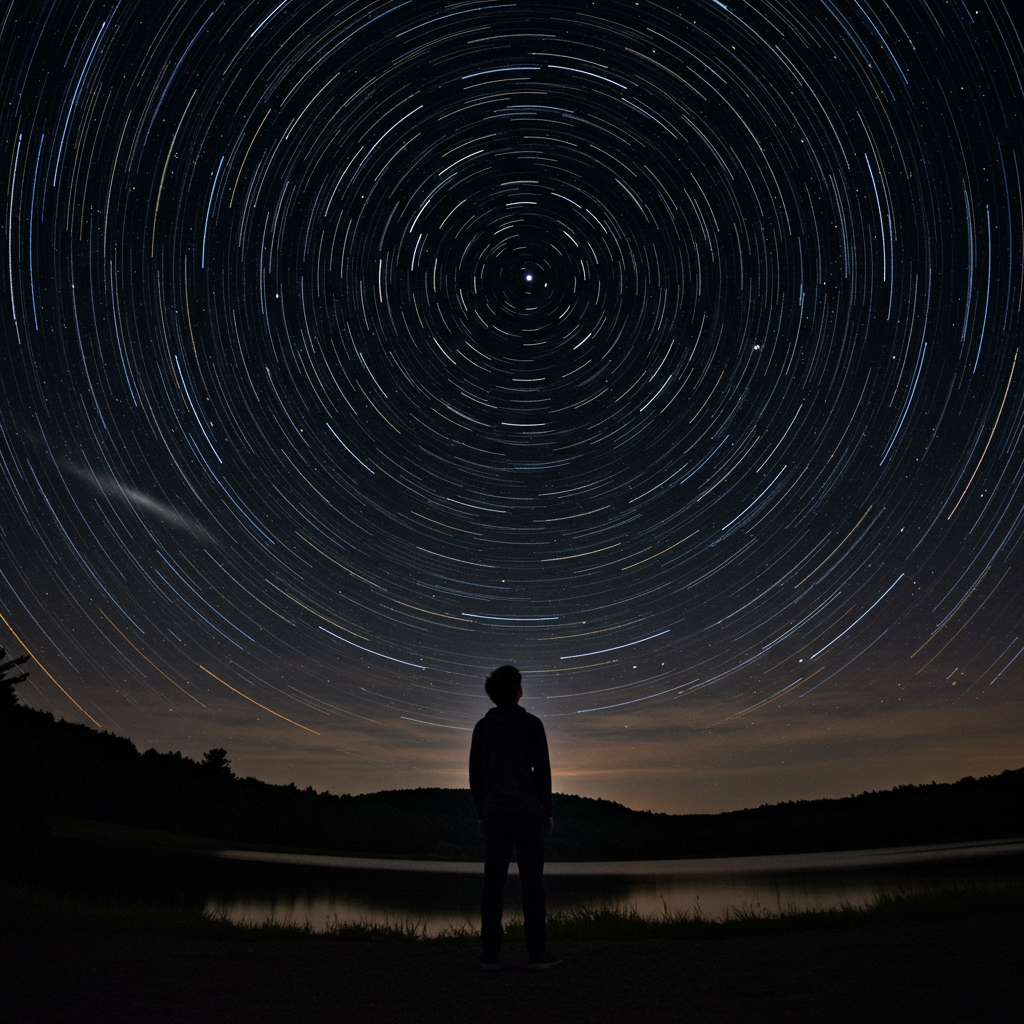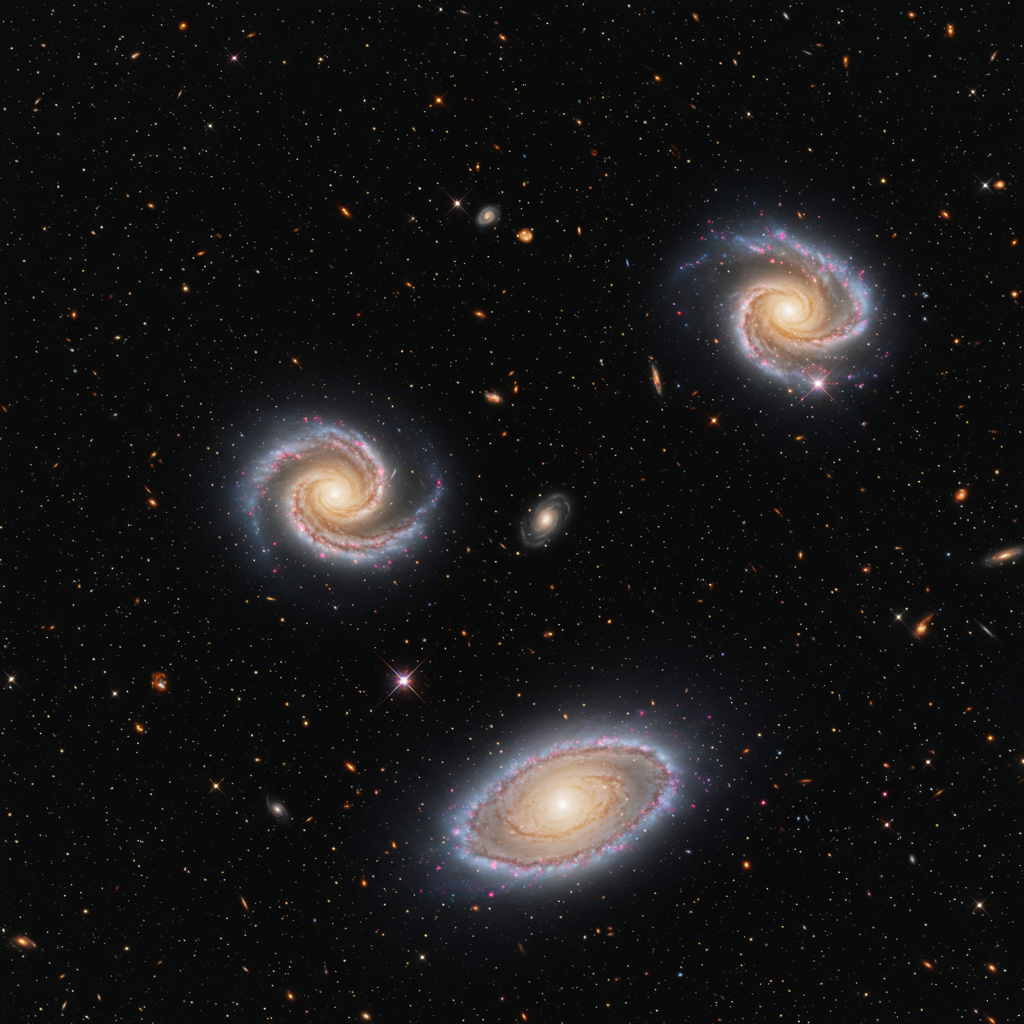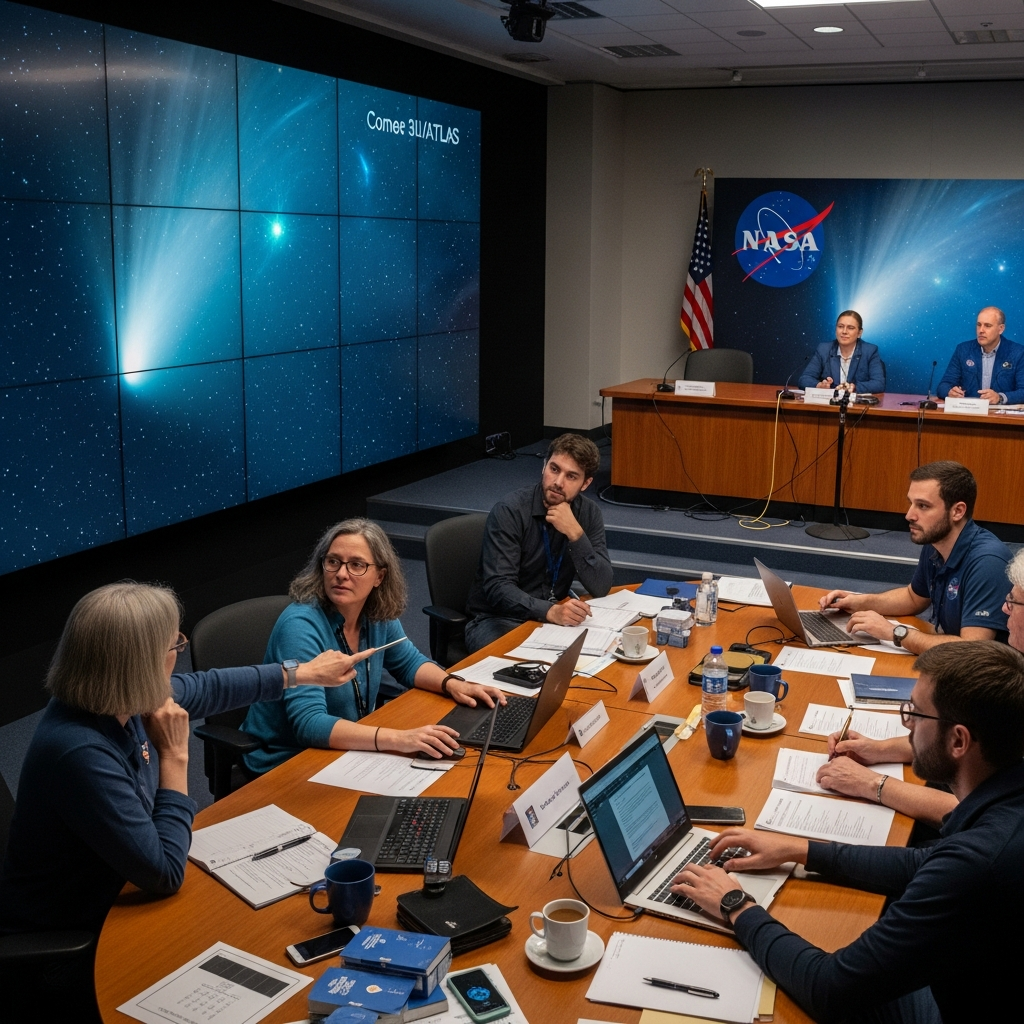Step outside this July 2025 and gaze up at a sky filled with celestial wonders. Whether you’re a seasoned astronomer or just starting your skywatching journey, the month ahead offers a rich tapestry of planetary appearances, the start of major meteor showers, and the prominent display of classic summer constellations. From brilliant morning planets greeting the dawn to faint dwarf planets requiring dedicated searching, July promises something for every observer. Get ready to explore distant worlds and ancient star patterns right from your backyard.
Why July 2025 is a Prime Month for Skywatchers
July presents a unique blend of astronomical events. While the longest days of the year mean shorter nights early in the month, the darkness gradually increases towards August, improving viewing conditions, especially for fainter objects and deep-sky treasures. The positioning of Earth in its orbit offers specific windows to view various planets, some reaching peak visibility or engaging in captivating close passes with the Moon or other planets. Plus, it marks the exciting beginning of major annual meteor showers, adding the chance to see streaks of light across the inky canvas.
Planets on Display in July 2025
Throughout July, several planets offer engaging viewing opportunities, visible at different times of the night. Locating these celestial bodies is a rewarding experience, often requiring nothing more than your eyes, though binoculars or a small telescope can reveal fascinating details.
The Morning Show: venus, Jupiter, and Saturn
Venus: The undisputed queen of the morning sky, Venus shines brilliantly in the east for a couple of hours before sunrise, all month long. Look for its dazzling light near the bright Pleiades star cluster (M45) and the prominent stars Aldebaran and Capella early in the month. As July progresses, Venus maintains its dominance, serving as an easy-to-spot guidepost in the pre-dawn twilight. Through a telescope, you can see its disk appearing increasingly full, waxing from a gibbous phase.
Jupiter: Joining Venus in the morning chorus after mid-July, Jupiter makes its return to visibility. Initially low in the eastern sky during the hour before sunrise, it rises a little higher each morning. This giant world is rapidly approaching Venus, setting the stage for a spectacular close conjunction in mid-August. By the end of July, early risers will be treated to the sight of the two brightest planets gracing the eastern horizon together. Jupiter will appear as a bright, steady point of light, easily visible even from light-polluted areas.
Saturn: The ringed jewel of the solar system becomes accessible earlier in the night during July. It rises around midnight local time, climbing high into the southern sky by dawn. Located in western Pisces, Saturn’s rising time advances daily, making it available for late-evening viewing. Its rings, currently appearing narrower following a recent ring-plane crossing, are a magnificent sight even through modest telescopes. Saturn also performs a noteworthy celestial dance this month, briefly halting its eastward motion against the background stars around mid-July before beginning an apparent backward, or retrograde, loop until late November.
Evening and Brief Appearances: Mars and Mercury
Mars: The Red Planet is an evening fixture in July, visible low in the western sky after sunset. It sits about 20 degrees above the horizon as twilight fades and sets a couple of hours after dark. As Earth and Mars move farther apart in their orbits, Mars will appear slightly lower and dimmer throughout the month. A particular highlight for Mars observers is the evening of July 28th, when the crescent Moon appears right next to the reddish planet, creating a beautiful visual pairing.
Mercury: Catching elusive Mercury requires quick timing and a clear western horizon during the first week or so of July. It’s visible for a brief period, starting about 30-45 minutes after sunset, but sets within an hour. Look very low in the west (10 degrees or less above the horizon). Despite its low altitude, Mercury will be relatively bright early in the month, reaching its greatest eastern elongation from the Sun on July 3rd. This provides its widest separation from our star, making it easier to spot in the evening twilight, especially favorable from more southerly locations. Through a telescope, Mercury will show a waning, half-illuminated phase.
Faint Wanderers: Uranus and Neptune
Uranus: This distant ice giant rises in the east with Taurus during the pre-dawn hours. At magnitude 5.8, it’s too dim for the naked eye but appears as a blue-green speck through binoculars or a telescope. Early risers can use bright Venus, which passes just 2.4 degrees south of Uranus on July 4th, as a guide to locate it.
Neptune: Even fainter than Uranus at magnitude 7.9, Neptune requires a telescope to be seen. It climbs the southeastern sky from late evening until dawn, located just one degree north of Saturn in Pisces. Neptune also begins its retrograde motion in July, starting its westward trek on July 5th.
Must-See Celestial Events in July 2025
July 2025 is punctuated by several specific dates offering unique viewing opportunities or marking significant astronomical milestones.
July 2 (Afternoon/Evening): First Quarter Moon – The Moon reaches this phase, appearing half-illuminated on its eastern side. This phase is excellent for viewing lunar terrain details along the terminator (the line between light and shadow) due to the low angle of sunlight.
July 2-3 (Evening): Lunar X and V – Near the First Quarter Moon, special optical effects called the Lunar X and Lunar V can be seen with binoculars or small telescopes. These temporary shapes, caused by sunlight illuminating crater rims, appear near the Moon’s southern and northern terminator, respectively. They are expected to peak around 10:15 p.m. EDT on July 2nd (02:15 GMT on July 3rd).
July 3: Earth at Aphelion – Our planet is farthest from the Sun for the year today. While it might seem counterintuitive during Northern Hemisphere summer, this distance doesn’t dictate seasons; Earth’s axial tilt is the primary driver of temperature changes.
July 3 (After Sunset): Mercury at Greatest Eastern Elongation – As mentioned earlier, this is the best time in this apparition to spot Mercury low in the western sky after sunset.
July 3 (Evening): Moon near Spica – The waxing gibbous Moon poses next to Virgo’s bright star Spica in the southwestern sky after dusk. They will be close enough to share a binocular view.
July 4 (Pre-dawn): Venus Passes Uranus – Use brilliant Venus to locate fainter Uranus with binoculars in the eastern pre-dawn sky.
July 5 (Evening): Sinus Iridum’s Golden Handle – Look for this visual effect on the waxing gibbous Moon’s western edge of Mare Imbrium. Slanted sunlight catches the Montes Jura mountain range, creating a ‘Golden Handle’ effect visible with telescopes or binoculars.
July 10 (Evening): Full Thunder Moon – The Moon reaches its full phase, appearing completely illuminated. Full moons rise as the sun sets and sit low in the sky during northern hemisphere summers. This specific full moon is often called the “Thunder Moon.”
July 14 (Early Hours): Saturn Stands Still – Saturn appears to pause its eastward movement against the stars before beginning its retrograde loop. This is an observational effect as Earth overtakes slower-moving Saturn in our orbits.
July 16 (Overnight): Moon near Saturn and Neptune – The waning gibbous Moon will appear near Saturn and Neptune in the east around midnight, offering a chance to see all three in or near the same binocular field.
July 17 (Evening): Third Quarter Moon – The Moon is half-illuminated on its western side. The week following this phase offers dark, moonless evening skies, ideal for observing fainter deep-sky objects.
July 20 (Pre-dawn): Crescent Moon Crosses the Pleiades – A beautiful sight in the eastern sky before dawn as the waning crescent Moon passes near or even through the Pleiades star cluster (M45). Binoculars enhance this view.
July 21-23 (Before Sunrise): Moon, Venus, and Jupiter Trio – A stunning series of mornings as a slender waning crescent Moon joins the bright duo of Venus and Jupiter in the eastern sky before sunrise. On July 21st, the Moon is above Venus; on July 22nd, it’s positioned between them; and on July 23rd, it’s near Jupiter. These close groupings make for excellent photo opportunities.
July 24: New Moon – The Moon is between Earth and the Sun and is invisible. This marks the darkest skies of the month for deep-sky observing.
July 25 (All Night): Pluto at Opposition – The dwarf planet Pluto is opposite the Sun in the sky, making it closest to Earth and theoretically brightest. However, at a faint magnitude of +14.4, it remains invisible without large telescopes and specialized charts due to its extreme distance.
July 26 (After Sunset): Slim Crescent Moon near Regulus – A very young, slender crescent Moon appears low in the west after sunset, near Leo’s bright star Regulus.
July 28 (After Sunset): Crescent Moon near Mars – The waxing crescent Moon makes a close pass by the Red Planet low in the western sky.
Meteor Showers: Summer Showers Begin
July heralds the arrival of two notable meteor showers, offering the potential for shooting stars, especially towards the end of the month.
Southern Delta Aquariids: Active from mid-July to late August, this shower peaks in the wee hours of July 29/30. Produced by debris from Comet 96P/Machholz, it’s best viewed from the Southern Hemisphere but still offers about 15-20 meteors per hour at peak from mid-northern latitudes. The waxing crescent Moon will not interfere with viewing this year’s peak.
Perseids: Considered one of the best showers of the year, the Perseids begin activity on July 17th. While its peak is in mid-August, July sees the slow ramp-up. Starting with only a few meteors per hour, the rate increases significantly by the end of the month, reaching around 15-20 per hour. Look towards the constellation Perseus in the northeastern sky.
Excitingly, the Southern Delta Aquariids and the early Perseids overlap in late July, potentially creating a dynamic sky with meteors streaking from different directions. The delta Aquariids are particularly intriguing, with the parent comet’s unusual orbit leading astronomers to speculate they might be fragments from outside our solar system.
Exploring the Summer Constellations: Aquila and the Summer Triangle
July is a perfect time to familiarize yourself with the classic star patterns of the Northern Hemisphere summer sky. Foremost among these is the “Summer Triangle,” an easy-to-spot asterism formed by three bright stars from different constellations: Vega in Lyra, Deneb in Cygnus, and Altair in Aquila.
Aquila, The Eagle: Featured this month is the constellation Aquila, the eagle, soaring high in the eastern sky during the first half of the night. Its brightest star is Altair, which sits at the southernmost corner of the Summer Triangle. Aquila represents the mythical eagle of Zeus. To find it, start with Altair. Imagine the eagle flying north with its wings spread wide; Altair is the ‘heart’ or a central point, flanked by fainter stars Tarazed and Alshain. The second half of July, when the Moon rises later, provides darker early-evening skies perfect for tracing out Aquila’s shape, especially if you live with light pollution.
The Summer Triangle’s Other Stars: Once you’ve found Altair, look for the other two bright stars completing the triangle. Vega, the brightest of the three, is located in Lyra (The Harp) to the northwest, while Deneb is in Cygnus (The Swan) to the northeast. This prominent triangle helps locate other constellations and the path of the Milky Way, which flows between Vega and Altair and right through Cygnus.
Phases of the Moon in July 2025
The Moon goes through its complete cycle of phases in July, influencing the visibility of fainter objects.
July 2: First Quarter
July 10: Full Moon (Thunder Moon)
July 17: Third Quarter
July 24: New Moon
The period around the New Moon (roughly July 21st to July 27th) offers the darkest skies, ideal for viewing meteors, faint galaxies, and nebulae. Full Moon nights are best for exploring lunar surface features through binoculars or telescopes.
A Historical Look Up: Mariner 4’s Mars Anniversary
Beyond the immediate celestial sights, July 2025 marks a significant anniversary in space exploration history: the 60th anniversary of NASA’s Mariner 4 mission in 1965. Mariner 4 was the first spacecraft to successfully fly by Mars, returning the first close-up images of another planet from deep space. Its findings — revealing a thin, cold atmosphere and a heavily cratered, barren surface — dramatically reshaped our understanding of the Red Planet, moving away from earlier hopes of a more Earth-like world. Mariner 4 paved the way for all subsequent Mars missions and demonstrated the power of robotic explorers.
Tips for Enjoying the July 2025 Sky
Making the most of July’s skywatching opportunities is easy with a few simple tips:
Find a Dark Location: Away from city lights provides the best views, especially for meteor showers and constellations like Aquila.
Check Local Times: Planet rise and set times vary based on your location. Use a skywatching app or website tailored to your area.
Allow Eyes to Adjust: Give your eyes at least 15-20 minutes in the dark to become fully sensitive to faint light.
Use Red Lights: If you need illumination, use a red-filtered flashlight to preserve your night vision.
Consider Binoculars: Even a basic pair can significantly enhance views of the Moon, brighter planets, and star clusters like the Pleiades.
Be Patient: Sometimes finding objects takes time. Use star charts or apps to guide you.
Frequently Asked Questions
What planets can I see in the July 2025 night sky?
In July 2025, you can see several planets. Look for brilliant Venus and newly-arriving Jupiter in the eastern morning sky before sunrise. Saturn rises around midnight and is visible until dawn. Mars is visible low in the west after sunset for a couple of hours. Elusive Mercury makes a brief appearance low in the western twilight during the first week of July. Uranus and Neptune require binoculars or a telescope and are visible in the pre-dawn hours.
What are the major skywatching events and dates for July 2025?
Key dates include July 3rd for Mercury’s greatest eastern elongation (best evening view) and Earth at aphelion. Look for the Moon near planets on July 21st-23rd (Venus and Jupiter) and July 28th (Mars). The Southern Delta Aquariid meteor shower peaks late on July 29th/early July 30th, while the Perseid shower begins increasing activity after July 17th. Specific Moon phases occur on July 2nd (First Quarter), 10th (Full), 17th (Third Quarter), and 24th (New).
How do I locate the Aquila constellation and the Summer Triangle in July 2025?
Find Aquila by first identifying its brightest star, Altair, which is part of the easy-to-spot Summer Triangle. Altair is the southernmost star in the triangle. Look high in the eastern sky during the first half of the night. The Summer Triangle is completed by Vega (the brightest star, located to the northwest of Altair) and Deneb (to the northeast). Aquila appears to fly north with wings spread from Altair. The second half of July offers darker skies for better viewing of Aquila’s fainter stars.
Conclusion
July 2025 offers a compelling mix of bright planets, stunning lunar conjunctions, the start of exciting meteor showers, and the opportunity to explore iconic summer constellations like Aquila and the Summer Triangle. Whether you’re tracking planetary movements, waiting for a shooting star, or simply finding familiar patterns in the sky, the month ahead is filled with celestial highlights. Take some time to look up and connect with the cosmos – the view is waiting.




